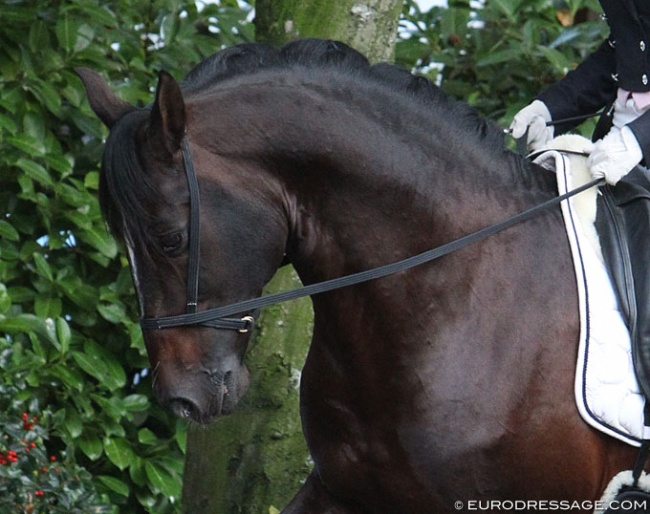
At the 2017 ISES Conference in Australia, researchers Kubiak, Vogt, Sauter, Christen and König von Borstel presented their study on horses' voluntary acceptance of rein tension with various bitless bridles compared to a single-jointed snaffle bit.
Horses applied similar rein tension to bitless bridles, such as the LG-bridle®, Dr Cook’s Bitless Bridle®, Fred Rai Rope® or a conventional rope halter, compared to a single- jointed snaffle bit. The study indicated that with the different types of headgear, the same rein aid is similarly aversive to horses, and at equal levels of prior training, signals of the same intensity are sufficient to produce a noticeable aid.
The Study
In trying to use more welfare-friendly alternatives to conventional bridles, riders often resort to bitless bridles, but little is known about horses’ pressure sensitivity in the different body parts bitted and bitless bridles act on. The aim of the study was to obtain information on how horses perceive the pressure exerted by various bitless bridles as compared to a regular snaffle bit.
For this purpose, 21 leisure or riding school horses of various breeds (hot-blood types: n=4, warmblood types: n=14, cold-blood/heavy pony types: n=3; all usually ridden with a jointed snaffle bit) were each equipped in random order with the following headgear: LG-bridle®, Sidepull, Dr Cook’s BitlessBridle®, Fred Rai Rope® (similar to a Bosal), conventional rope halter, and a conventional bridle with a single-jointed snaffle bit.
Reins were equipped with a Centaur rein tension meter fastened 10cm above the withers to an anti-roll bar of a girth to simulate the position of the rider’s hands and adjusted to a length that allowed the horse to hold the forehead 5-10 degrees in front of the vertical. Subsequently, horses were lured with food to encourage them to stretch horizontally-downwards against the reins, while standing in a stable.
Testing was terminated when a horse had attempted to reach the food and subsequently released tension or after a maximum of 1 minute. This procedure was repeated for each horse and bridle type three times per day, and the entire trial was repeated for each horse on three subsequent days.
The Findings
A mixed- model accounting for the type of bridle, repetition (1st, 2nd, 3rd test day), horses’ breed type and age (4–24 years, considered as a covariate) and adjusting for multiple comparisons using the Tukey test, was used to analyse maximum rein tension exerted by the horses in an attempt to reach the food.
Cold-blood/pony-type horses applied significantly higher maximum rein tension compared to the horses of warm- and hot-blood type. Age and repetition did not influence rein tension parameters. With the exception of the Sidepull horses applied similar amounts of maximum tension to all other bridles, including the snaffle bit, although the Sidepull and the snaffle did not differ significantly from each other.
Conclusion
Provided that horses receive equal levels of prior cue training, results indicate that with the investigated headgear except for the Sidepull, similar levels of rein tension may be required to produce a salient stimulus, and that the same amount of rein tension results in similar levels of discomfort in the horse.
Compared to the other bridles, the Sidepull is equipped with a stiffer and thinner nose-band, resulting at equal levels of rein tension in higher pressures on the horse’s nose, which explains the lower threshold of maximally tolerated rein tension for this bridle.
Related Links
Bitless or Not, It’s About Having the Choice
Bitless Competition at 2012 Helsinki Horse Fair Huge Success
Exhibition of Bitless Dressage at 2012 Helsinki Horse Fair
Operant Riders Propose Six Major Rule Changes to Finnish Equestrian Federation to Benefit Horse Welfare
FN Training Seminar with Hess and Graf: "Quality Equitation Leads to Success"